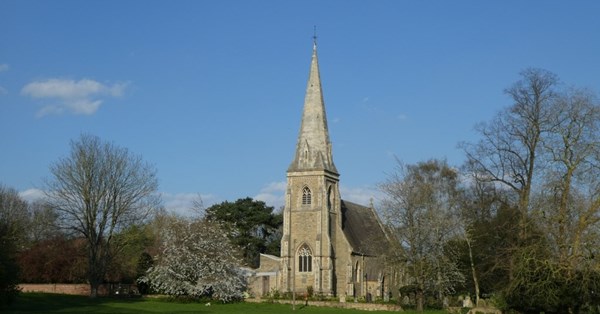A CRUMBLING Victorian font that had become redundant when an ecumenical church in York was reordered 50 years ago is to be buried in the churchyard.
The Consistory Court of the diocese of York granted a faculty permitting St Paul’s, Heslington, to bury the remains of the listed Victorian font. St Paul’s is Grade II listed, and originated as a chapel of York Minster. It underwent an extensive reordering in 1973, when it became a joint Anglican and Methodist church that also serves both the parish and the university.
As part of the reordering, a stainless-steel font, regarded as more in keeping with the new modern interior, was introduced. This replaced the original 19th-century font, made of soft limestone and, unusually, listed in its own right.
The original font was then placed outside and used as a plant pot, and, in recent years, it was noticed that it had deteriorated considerably, with extensive cracking and the loss of the rim. In October 2022, an interim faculty was obtained to bring it back into the church with the intention that conservation work be undertaken, and it would be relocated for display as a “museum piece”.
A conservation report by a professional stone conservator, and other professional advice, however, indicated that the font had suffered too badly from weathering, and that its very poor condition and the expense involved in restoring it would not make it possible for it to become a museum piece.
Other options for the disposal of the original font were explored. After consultation with the archdeacon and the diocesan advisory committee (DAC), the conclusion was that the burial of the font in the churchyard was the best option in the circumstances. That option was recommended by the DAC and unanimously supported by the PCC. There were no objections from the public.
The Church Buildings Council, the Victorian Society, and Historic England were consulted. Each of them raised objections to the proposal, but none elected to become a party opponent.
The Diocesan Chancellor, the Worshipful Lyndsey de Mestre KC, said that the case law indicated that “the burial of fonts should be seen very much as a last resort,” and the availability of other options should be considered sequentially first. Those other options were: relocation in the church, relocation in another church, relocation to a museum, sale, or storage.
Alternatives to burial had been investigated, but were either not available or were impractical or undesirable. The highly individual modern interior of the church after the 1973 reordering meant that both the lack of a suitable space and the confusion of an otherwise unbroken interior character were presently barriers to the reintroduction of the original font to the interior as a display item.
Relocation to another church had also been investigated, with the assistance of the DAC;s Church Buildings Adviser, over a period of more than a year, and no church had been found which was willing take on the font. It was highly unlikely that a taker would be found. Sale of the font had been explored as an option, but no buyer had been found.
Space for storage in the diocesan store was available. The Chancellor did not agree, however, that storage should be opted for, in preference to burial, in this particular case. Storage in a diocesan store where it might be inadvertently chipped, bumped, or knocked over was unlikely to afford the font any greater physical protection than burial in the ground would do, the Chancellor said, and it also severed “the group and communal value links and [lacked] something of the symbolism, reverence, and respect that burial would afford it”. It was also “more likely to result in the original font being forgotten about and lying permanently moribund in the store than a dignified (and reversible) burial in the churchyard with appropriate record keeping”, she said.
In those circumstances, the Chancellor considered that burial of the font was potentially an appropriate outcome on the facts of the case. In reaching that conclusion, the Chancellor had borne in mind that there was a strong presumption against a proposal that adversely affected the special character of a listed building, and in this case an individually listed font.
The moderate harm that would flow from the burial of the original font was “amply outweighed”, she said, by the public benefits that the church would receive, including the ability to maintain its current seating capacity.
The parish would be spared the costs of restoration, and would also be maintaining the historical, spiritual, and communal links that the church had with the font, by retaining it on site in a way that, ultimately, was reversible in the future, should there be a desire to unearth and restore it, the Chancellor said.
















